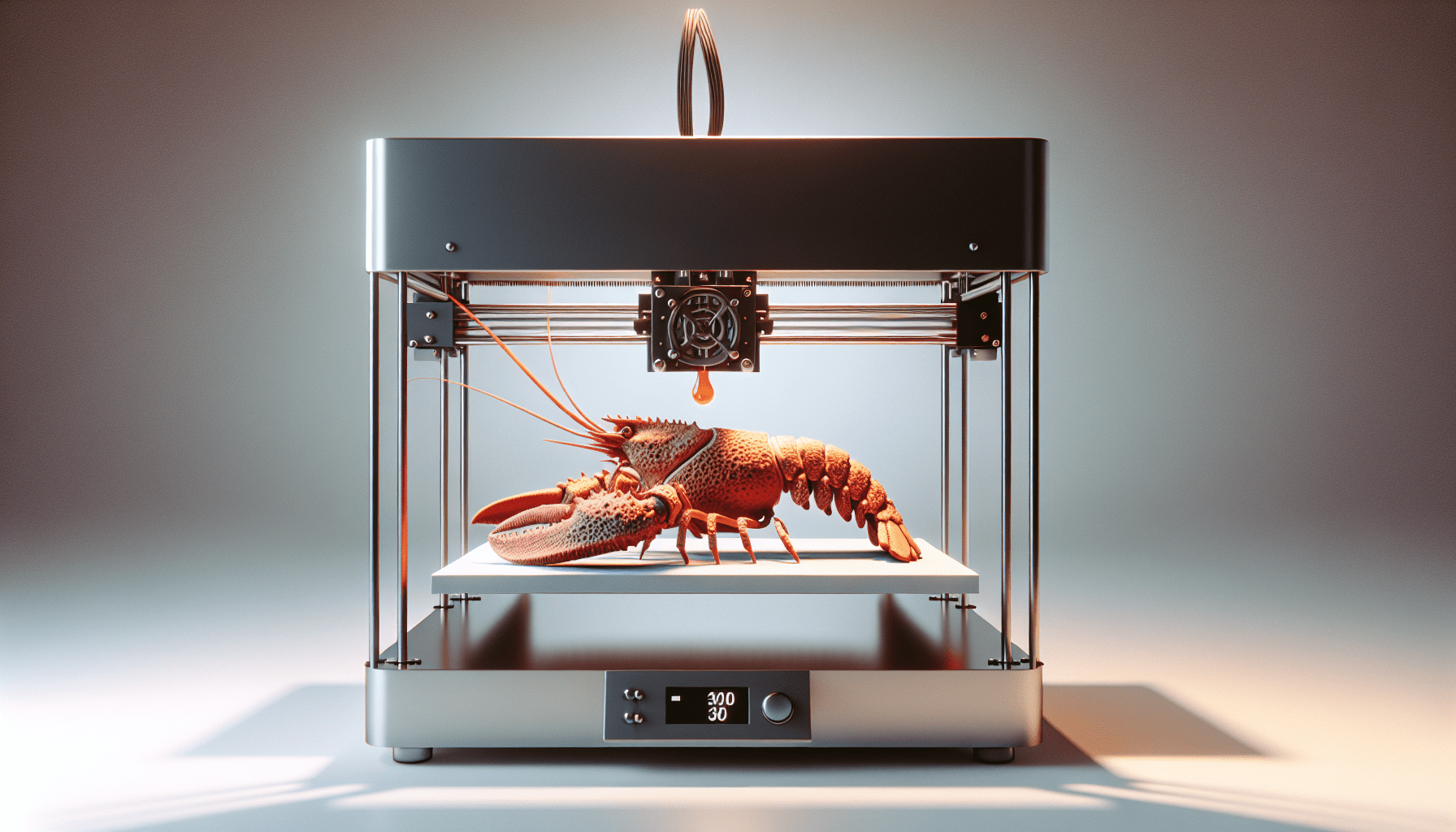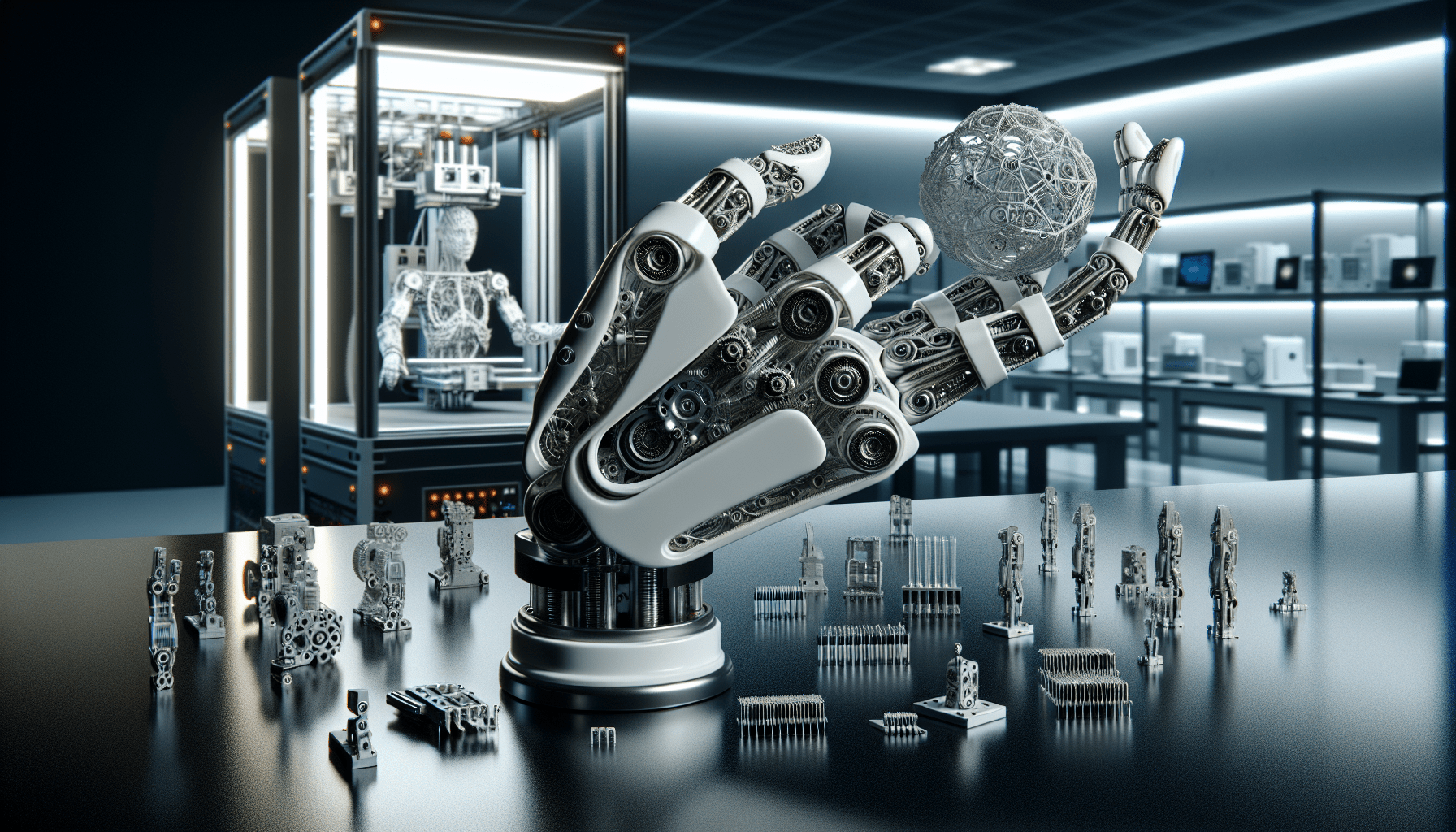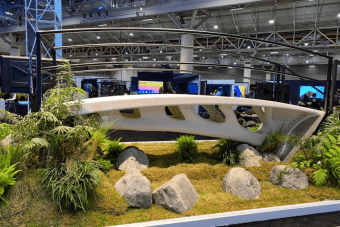ELEGOO Neptune 3 Pro FDM 3D Printer with Auto Bed Leveling, Dual-Gear Direct Extruder, Dual Lead Screw Drive, Removable Capacitive Screen, 8.85x8.85x11in Large Printing Size
$209.99 (as of June 19, 2025 23:45 GMT +00:00 - More infoProduct prices and availability are accurate as of the date/time indicated and are subject to change. Any price and availability information displayed on [relevant Amazon Site(s), as applicable] at the time of purchase will apply to the purchase of this product.)Have you ever wondered how the seafood we consume could be transformed into a building material? The innovative lengths to which technology has gone can sometimes be jaw-dropping, and the intersection of sustainability and design proves to be one of those fascinating surprises.
Design Studios Create 3D Printing Biocomposite Made from Lobster Shells
It’s intriguing to learn that the discarded parts of our meals could offer such profound opportunities. The world of additive manufacturing (AM) keeps pushing the boundaries of what’s possible, and this time around, it’s lobster shells taking center stage.

Buy Photon Mono M5 Get Free 1KG Resin
The Concept Behind Using Lobster Shells
When we think about waste, lobster shells surely don’t come to mind as a potential building material. But let’s delve into why these shells are more than just refuse. Lobster shells, primarily composed of chitin, a polysaccharide found in the exoskeletons of various arthropods, offer durability, antibacterial properties, and biodegradability. With volume, comes opportunity, and considering the lobster industry’s waste, there’s a staggering amount to be repurposed.
The Pioneers: MANUFACTURA and bioMATTERS
Two design studios, MANUFACTURA and bioMATTERS, have stepped up with an extraordinary solution. MANUFACTURA is no stranger to innovative materials, having earlier made waves with a bio-ceramic material developed from eggshells. This time, partnering with bioMATTERS, they’ve successfully transformed lobster shells into a ceramic-like material for 3D printing.
Their groundbreaking work took place at the Haystack Mountain School of Crafts in Maine, the largest lobster-producing state in the U.S. This local connection not only facilitated material sourcing but also aligned with the project’s sustainability goals, making the process both innovative and locally-rooted.
The Science of Lobster Shells
Wondering about what makes lobster shells ideal for such a project? Here’s a deeper dive into what chitin is and why it matters. Chitin is a long-chain polymer that’s robust and, importantly, biodegradable. It’s the same substance you find in crab shells and insect exoskeletons. Taking lobster shells, crumbling them down, and turning them into a functional biocomposite sounds like a recipe for success.

$30 off $400+ Anycubic Products with code AC30OFF
Creating the Composite Material
Let’s visualize the process. The composite is a slurry – a thick, semi-liquid mixture. This slurry is made from finely crushed lobster shells sourced from Greenhead Lobster, a Maine-based manufacturer. The lobster shells are combined with ceramics, such as porcelain, which add strength and ease the sintering process necessary for 3D printing. Binding agents are thrown into the mix to hold it all together.
| Ingredient | Source | Purpose |
|---|---|---|
| Lobster shells | Greenhead Lobster | Provides chitin content, durability |
| Porcelain Ceramics | Local ceramics | Adds strength, assists in sintering process |
| Binding Agents | Various suppliers | Bonds the material components |
How Many Lobster Shells Does It Take?
Here’s a fun fact: it takes about 15 lobster shells to create two kilos of this 3D printing slurry. Considering the sheer volume of lobster caught annually—over a hundred million pounds in Maine—this approach points towards a highly scalable and renewable material source.
Potential Applications in Design and Construction
So, what’s the end game with this material? Its creators are eyeing design and construction applications. Given the temperature and strength tolerance typical of ceramic materials, substituting traditional ceramics with this biocomposite could revolutionize various sectors. “Our ultimate motivation is to develop blocks and finishes for building construction,” explained the collaborative team. They foresee leveraging the singular properties of lobster shell composites to produce sustainable, innovative building materials.
Broader Implications and Past Research
It’s not just MANUFACTURA and bioMATTERS exploring the wonders of chitin. In 2020, the Singapore University of Technology and Design developed a Martian biolith from chitin-based materials. Similarly, the German Institutes of Textile and Fiber Research have worked on lightweight bio-based fiber composites using chitin.
The Future of Sustainable Materials
Where do we go from here? The horizon seems promising. Given the composite’s potential, it stands to make significant headway not just in specialty applications but even perhaps into mainstream construction. This represents a move towards a circular economy where waste is minimized, and resources are continually repurposed.
Moreover, as the 3D printing market continues to burgeon—consumer products AM generated $2.6 billion in 2023 and is expected to grow to $28 billion by 2033—you can imagine the vast potential for such sustainable materials.
Collaborative Efforts: A Model for Future Innovation
The synergy between MANUFACTURA and bioMATTERS could serve as a blueprint for future sustainable material innovations. When local resources, industry know-how, and forward-thinking designs are brought together, the outcomes can be both revolutionary and environmentally responsible.
Closing Thoughts
From your dinner plate to potentially your living room wall, lobster shells exemplify the next frontier of sustainable innovation. As we look forward, the integration of biocomposites in various industries promises not only a reduction in waste but also the evolution of materials that are kinder to our planet.
This confluence of creativity and sustainability fosters a future where no material is wasted, and every resource is valued, setting a new standard for what’s possible in the realm of design and manufacturing.
Buy Photon Mono M5 Get Free 1KG Resin








